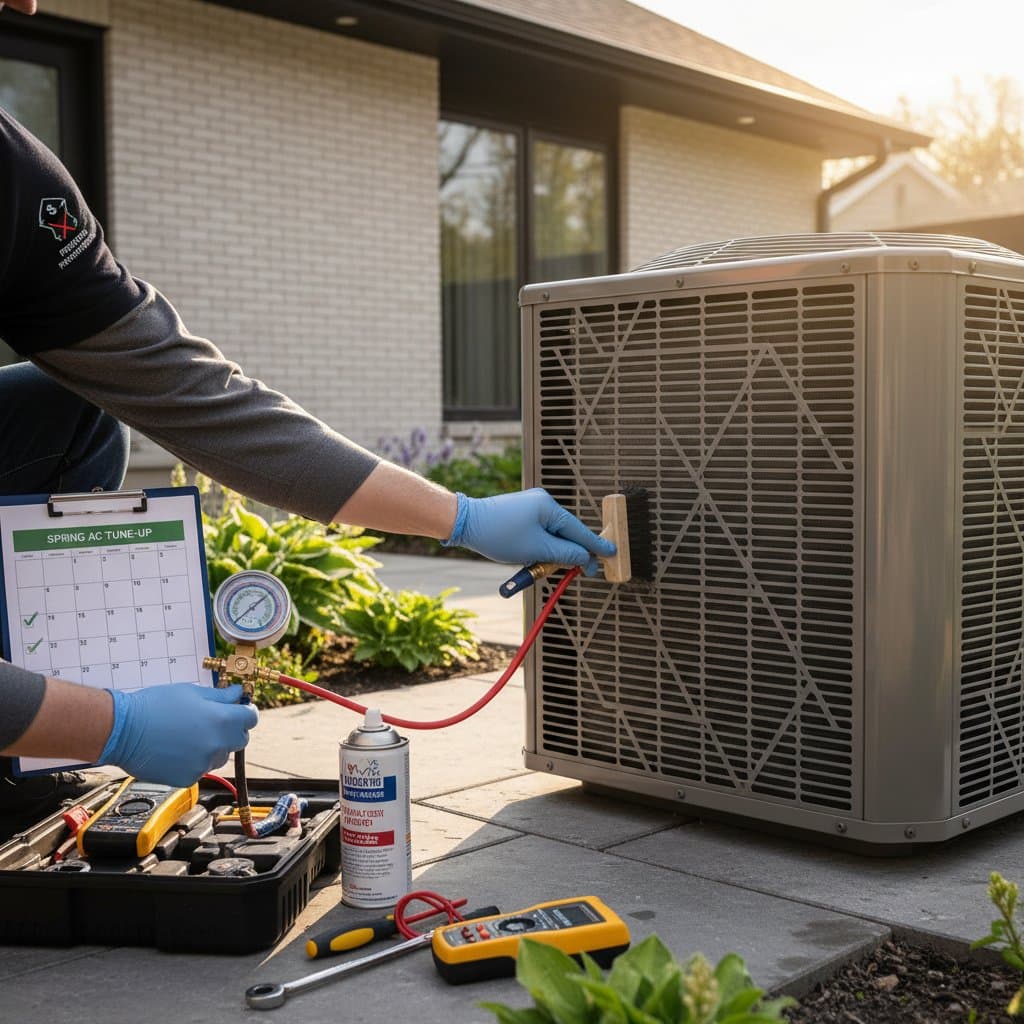Spring HVAC Tune-Up: Avoid Costly AC Failures
Imagine the frustration when an air conditioner stops functioning during the initial heat wave. The home becomes uncomfortably warm, service providers face full schedules, and temporary solutions like fans offer limited relief. Proactive care through a spring HVAC tune-up eliminates these disruptions, ensuring reliable cooling, optimal energy use, and sustained comfort.
A timely inspection prepares the system for peak demands, identifying minor issues before they escalate. Homeowners benefit from lower utility bills and reduced repair expenses. This maintenance approach supports long-term system performance and enhances overall indoor environment quality.
Essential Benefits of Spring Maintenance
- Professional tune-ups range from $80 to $200, compared to repair costs of $400 to $2,000 for common failures.
- Basic DIY efforts require one to two hours and can increase efficiency by 15 percent.
- Focus on filter replacement, coil inspection, and thermostat calibration as foundational actions.
- Consistent servicing extends equipment durability, lowers operational costs, and minimizes unexpected outages.
Financial Implications of Neglecting Maintenance
Postponing a tune-up may appear economical initially, yet it often results in substantial future expenses. Compressor malfunctions, a frequent summer issue, require replacements costing $1,000 to $2,500. Accumulated dirt on coils and filters forces the system to consume more energy, potentially raising bills by 20 percent.
Discomfort extends beyond finances during high-demand periods, with repair delays spanning several days. Routine checks maintain consistent temperatures and improve air filtration, benefiting those with allergies or respiratory concerns. Investing in prevention preserves both budget and well-being.
Preparatory DIY Measures for System Optimization
Homeowners can undertake several tasks prior to professional service, using basic tools like a screwdriver and hose. These steps require approximately one hour and prepare the unit for thorough inspection. Such preparations often reveal obvious problems early.
1. Air Filter Maintenance
Begin by examining and replacing the air filter, a critical component for airflow. Neglected filters accumulate dust rapidly; standard replacements cost $10 to $40, while advanced HEPA options range from $50 to $100. Fresh filters safeguard internal parts and enhance air circulation throughout the home.
2. Outdoor Condenser Clearance
Inspect the exterior unit for debris such as leaves or overgrown plants. Maintain a two-foot clearance around all sides to facilitate airflow. Rinse the coils gently with a garden hose, directing water from the outer edges inward to dislodge pollen and dirt; pressure washers risk damaging delicate fins.
3. Vent and Duct Assessment
Ensure all interior vents remain unobstructed and fully open. Obstructions lead to uneven pressure, overworking the system. Clean dusty vents using a vacuum attachment or damp cloth to promote balanced distribution.
4. Thermostat Functionality Check
Switch the thermostat to cooling mode and lower the setting below the current room temperature. The unit should activate within one to two minutes. If no response occurs, verify the circuit breaker before seeking assistance.
5. Drain Line Cleaning
Locate the PVC drain near the indoor handler and introduce a cup of white vinegar to dissolve algae buildup. This prevents clogs that cause leaks damaging floors or walls. Regular application keeps drainage efficient.
Planning and Cost Management for Servicing
Expect spring tune-up fees between $80 and $200, varying by location and unit capacity. Annual contracts covering spring and fall visits typically cost $150 to $300, delivering ongoing value through efficiency gains and avoided emergencies. These plans justify the investment via reduced long-term expenditures.
For aging systems, anticipate minor component replacements like capacitors ($100 to $250) or blower motors ($400 to $700). Addressing wear promptly distributes costs effectively. Upgrading to energy-efficient models cuts cooling expenses by 20 to 40 percent; consult utility providers for available rebates.
Indicators Requiring Prompt Professional Evaluation
Despite diligent care, certain symptoms signal underlying problems. Monitor for warm airflow from vents during cooling cycles, indicating refrigerant or compressor concerns. Grinding, rattling, or buzzing sounds suggest mechanical wear.
Frequent on-off cycling points to thermostat or electrical issues, while room-to-room temperature variations highlight duct inefficiencies. Unexplained bill increases often stem from reduced performance. Immediate action on these signs halts progression to major failures.
Ongoing Care for Seasonal Reliability
After initial tuning, sustain performance by replacing filters every one to three months, adjusted for household activity and local air conditions. Regularly clear the outdoor unit of debris and recalibrate thermostat settings with routine changes. Smart thermostats benefit from periodic schedule reviews to optimize energy use without sacrificing comfort.
Effective HVAC management extends beyond temperature control. It regulates humidity levels, filters airborne particles, and boosts property appeal for future sales. Documented maintenance records reassure potential buyers, facilitating quicker transactions and higher valuations.
Securing Lasting Summer Comfort
A comprehensive spring HVAC tune-up establishes a foundation for uninterrupted cooling. Homeowners gain peace of mind, financial savings, and a healthier living space. Implement these strategies to navigate the warm months with confidence and efficiency.
